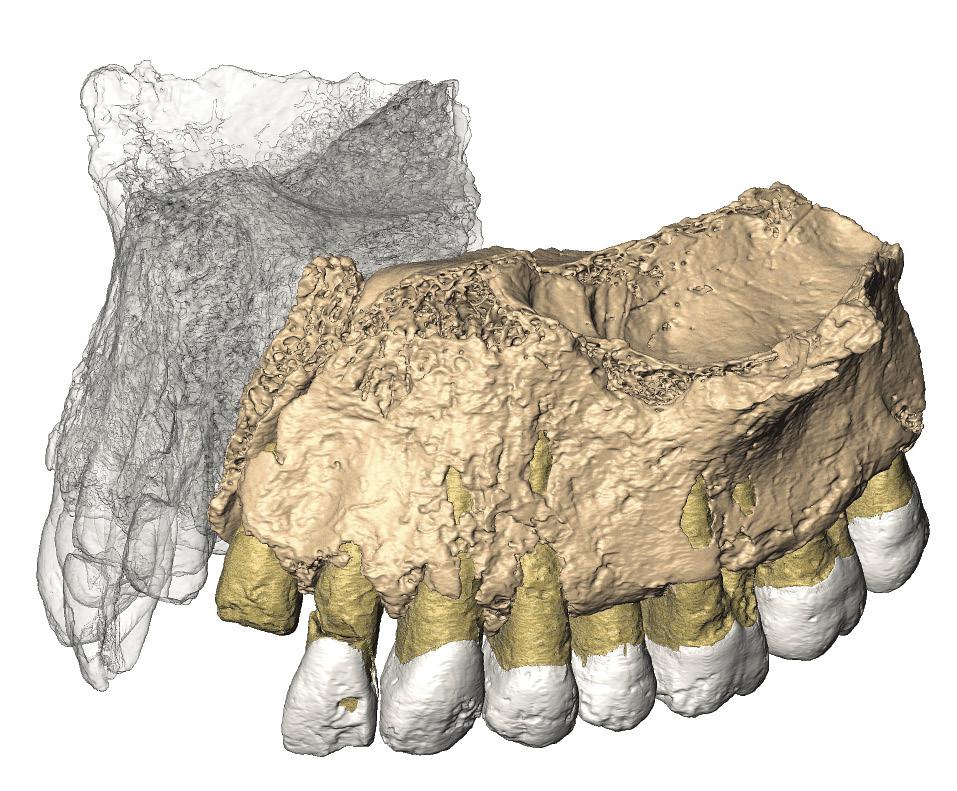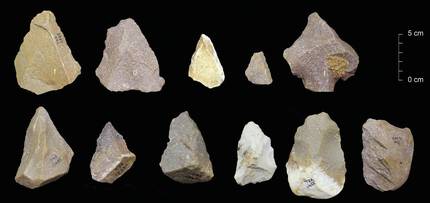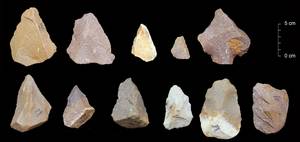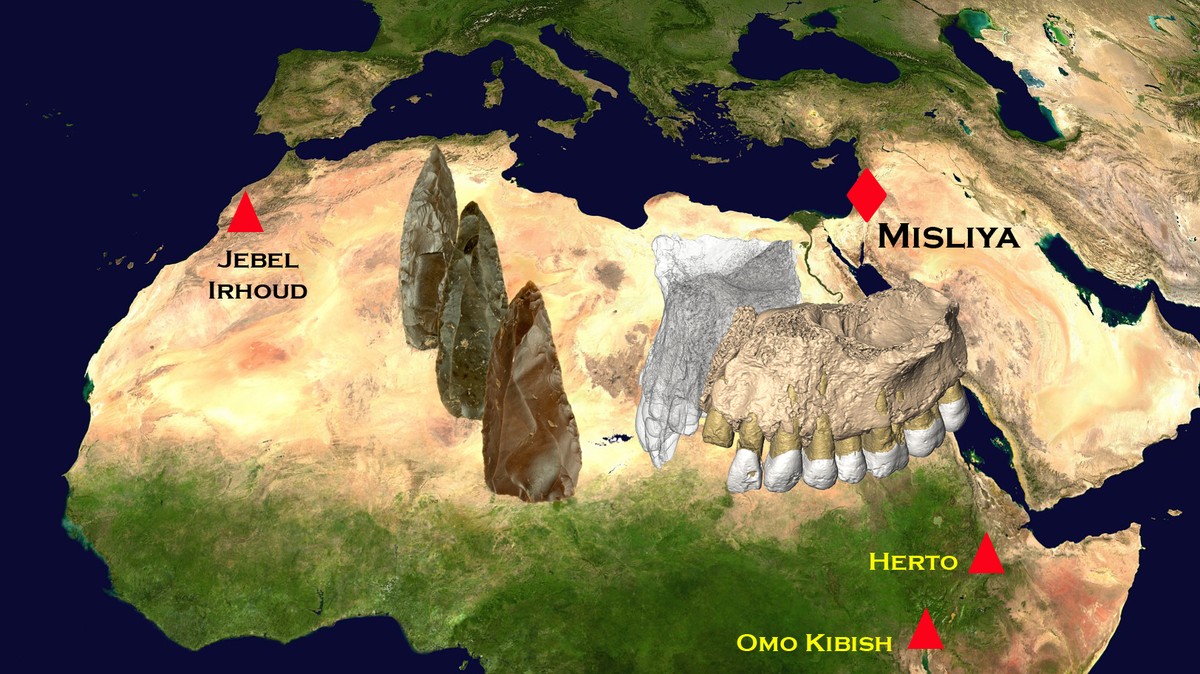Successive discoveries to understand the evolution of our species
2018/03/01 Agirre Ruiz de Arkaute, Aitziber - Elhuyar Zientzia | Galarraga Aiestaran, Ana - Elhuyar Zientzia Iturria: Elhuyar aldizkaria

Three important archaeological investigations have been published in a very short time. The first is from the cave of Misliya (Israel). The study of the human teeth and tools of 177,000-194,000 found on the site has concluded that they are the oldest remains of modern man outside Africa. The second research was conducted at the Attirampakkham site in India. There they have found a series of characteristic tools of the Middle Palaeolithic, stone tools made with the Levallois technique, which have calculated at 385,000 years. Finally, the results of the first study of “The Man of Beijing” have been published. It is a study of the teeth of a homo erectus, very useful to understand how human evolution was in the Far East.
The oldest outside Africa
So far it was thought that modern humans first left Africa 90,000 to 120,000 years ago. The remains found in the cave of Misliya are older. Therefore, they conclude that they had left earlier than they thought. The new date coincides with what genetics have pointed out, as it is estimated that about 220,000 years ago they left.
Joseba Ríos Garaizar, researcher at the Center for Research on Human Evolution (CENIEH), has considered the discovery important: “The departure of modern man is advancing almost 80,000 years. This means they would have 80,000 more years of contact with the Neanderthals.”
“Genetics has shown that the main mix between Neanderthals and modern humans occurred long before modern man arrived in Europe, and the possible scenario is located in the Middle East,” explains Ríos. The Middle East was the largest corridor for hominid migration along the Pleistocene. Modern men, Neanderthals from Europe, arrived from Africa, and on that trip the two species were present for 150,000 years, according to the new study.
Researchers have claimed that humans in the Misliya cave used the Levallois lytic industry, making them the oldest vestiges of modern men who used this technology. “Levallois is a very controlled technique. The tips were fine and very sharp, with a very planned technique and fixed working standards.
It was a great technological advance as a systematic production was achieved. In the appearance of this technological leap we put the border between the Lower Palaeolithic and the Middle”, explains Ríos. “This research will serve to put order in the industries of the Middle East, to unravel what Neanderthals or modern humans did, as at that time the two species were very technologically similar.”
There are few traces of modern archaic human beings, so it is very difficult to analyze their origin, their culture and their migrations. According to Ríos, “this research has set a new milestone for understanding it.”

What happened in Asia is key
Immediately after the publication of the research of the Mysliya deposit in the journal Science, another research was published in Nature. Specifically, it referred to some instruments from the Attirampakkham deposit (southeastern India). According to the study, these tools have characteristics typical of the Middle Palaeolithic, some of them made with the Levallois technique.
The research has generated a series of questions, as the tools estimate that they are 385,000 years old, and all the evidence so far point to the fact that modern man has not yet arrived in Asia. There are, therefore, two possibilities: these tools are manufactured by modern man, so they spread throughout Asia long before they thought; or their human beings developed this technique, at the same time as modern African men and European Neanderthals.
For Rios, this second hypothesis is the most prudent and in his favor have also been shown the researchers of Attirampakkham. “There is no indication to think that there was such an early migration of those who had this technology outside of Africa. The oldest ones are those of Misliya for the moment, and in the future they may be even older, but for the moment they do not exist”, explains Ríos.
In addition, it seems logical that the human beings who lived there have developed for themselves the Levallois technique, which also happened in other places: “This technique can be considered a continuation of the Acheulian culture. Acheuliense is from the lower Palaeolithic, used to obtain the two faces. The Levallois technique, for its part, was used to remove the pants and requires a complex mentality and organization. Hence it is considered as characteristic of the Middle Palaeolithic. But evolution is not direct and continuous, it is not so simple. And although there are those who relate the Levallois technique to modern man, I think that is not entirely clear and not correct.”
Thus, Ríos believes that Attirampakkham's instruments could be the result of local development.
In any case, it is clear that knowing what happened in Asia will be key to understanding human evolution. In this sense, the study of the teeth of the “Beijing Man” has also provided significant data to know the Homo erectus. Rivers: “Many pieces of the history of our past are in Asia and we have not yet found them.”

Gai honi buruzko eduki gehiago
Elhuyarrek garatutako teknologia




